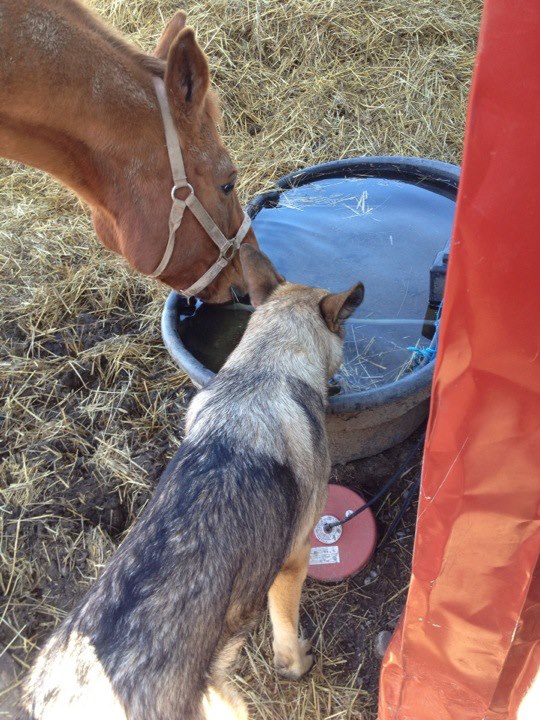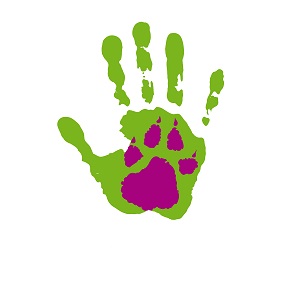Does Positive Dog Training Mean Ignore Bad Behavior?

There are a lot of positive dog training centers teaching people that if their dog reacts, shows aggression, or become over excited then all you need is to teach it to look, redirect its behavior and the problem will magically go away. There are people who say ‘teach an alternative behavior’, but if you’ve ever owned a hound who is ‘locked and loaded’ on a squirrel, or a herding dog who is over stimulated because everything is moving then you know that the theory is flawed.
While the foundational purpose of these exercises is sound, the problem lies in the fact that everyone wants to skip the building and behavior modification and jump to a quick fix. This is where positive reinforcement becomes twisted and ineffective.
Positive dog training doesn’t mean that you do not correct inappropriate behavior. It just means that you do not use fear or pain as punishments. It means that you don’t use any aversive that will damage your relationship with your dog.
If you truly ignore the bad behavior AND you do not stop it, then you are strengthening the dog’s bad behavior. The dog is practicing the undesirable behaviors. The dog will continue to practice them as long as they self-reinforce, and self-satisfy.
What is Positive Reinforcement?
Positive reinforcement doesn’t mean walking around with a treat in your hand.
It doesn’t mean stuffing treats into your dog’s mouth to stop it from reacting or being excited/fearful.
It does mean that you have a clear understanding that when dogs are fearful or over excited they do not think- they just react.
It basically means, If dogs are allowed to repeat a behavior they will become better at that behavior. If you want a dog to behave calmly then you need to set up the environment so the dog can practice being calm. The dog needs to be given the opportunity to realize that ‘calm’ not ‘aggression’ makes everything okay.
It doesn’t matter what behavior you are trying to fix. If your puppy chews when you are not watching him/her then limit the puppy’s freedom to areas where you can control your puppy.
Stop Rewarding Bad Behavior
In a lot of cases people reward bad behavior. I’ve seen this countless times. The dog is barking, lunging, and pulling and the owner has a treat in front of the dog’s mouth. The treat is not going to reinforce the dog being calm. It reinforces the behavior that the dog is doing when you present the treat.
But don’t ignore the behavior. Doing so can cause side effects like frustration, aggression, and extinction bursts.
I would ignore the behavior of jumping up by not reinforcing it. BUT, the moment the dog has 4 paws on the floor I would make a big deal over the dog. Remember, that the dog is engaged in the bad behavior because it wants something. If it is chewing shoes then it may be bored, or need exercise. If it is jumping up then it wants your attention.
Ignore the bad behavior means don’t reinforce it. But it doesn’t mean that you should let it continue.
Start Rewarding Good Behavior
Most people explode into activity and engagement when their dog does something bad. But they will ignore hours of good behavior. Teach the dog what you want him to do, first. Take the time to make ‘being good’ fun. Preventing bad behaviors is 110% more effective in the long term than interrupting unwanted behaviors.
If the dog is behaving inappropriately then give the dog a chance to stop the negative behavior, and the moment it does (not 10 seconds later) start giving the dog something you know it wants. This way the good behavior is satisfying a need.
Build Good Emotional Responses
Dogs are driven by what we call emotions. They will do anything that feels good, and avoid anything that feels bad. They will work (obey) if it feels good and makes them, and you, happy. If you do need to stop a bad behavior then try to do so by engaging the dog in something fun.
If the dog ‘gives’ you a behavior, even if it is accidentally, praise the dog and reinforce the behavior.
If the dog is jumping on me I will ignore it. I may turn away. I may hold my hands out to create space between us. There is no emotional satisfaction in this. Then when the dog is behaving I will play with it.
Put Good Behavior on Cue
So after you reward the good behavior then put it on cue. When my dogs want my attention they touch my hand. I taught my dogs that this is an acceptable way to get my attention. I know people who teach their dog that is will get attention if it sits quietly in front of them. Give the dog a way of asking for what it wants so that it has a ‘good’ way of communicating with you and doesn’t need to resort to offensive behavior
